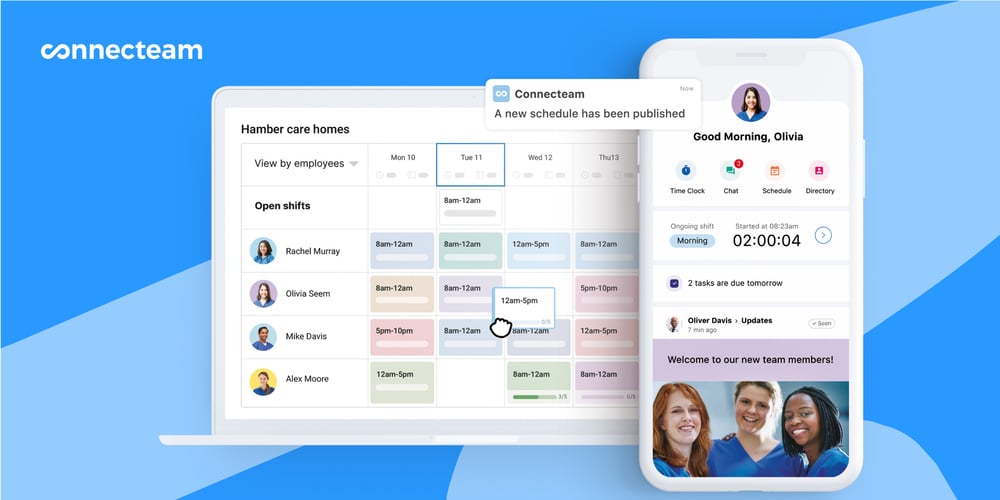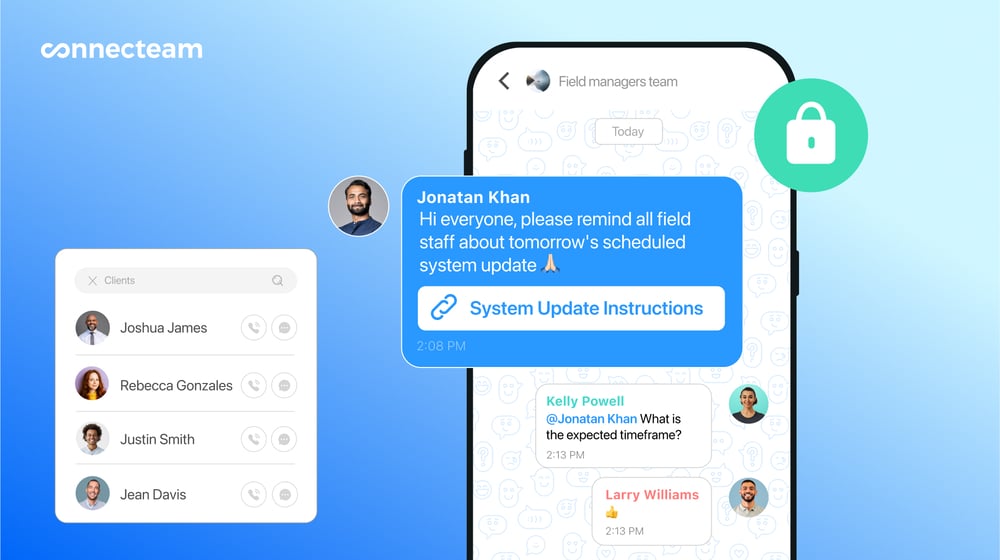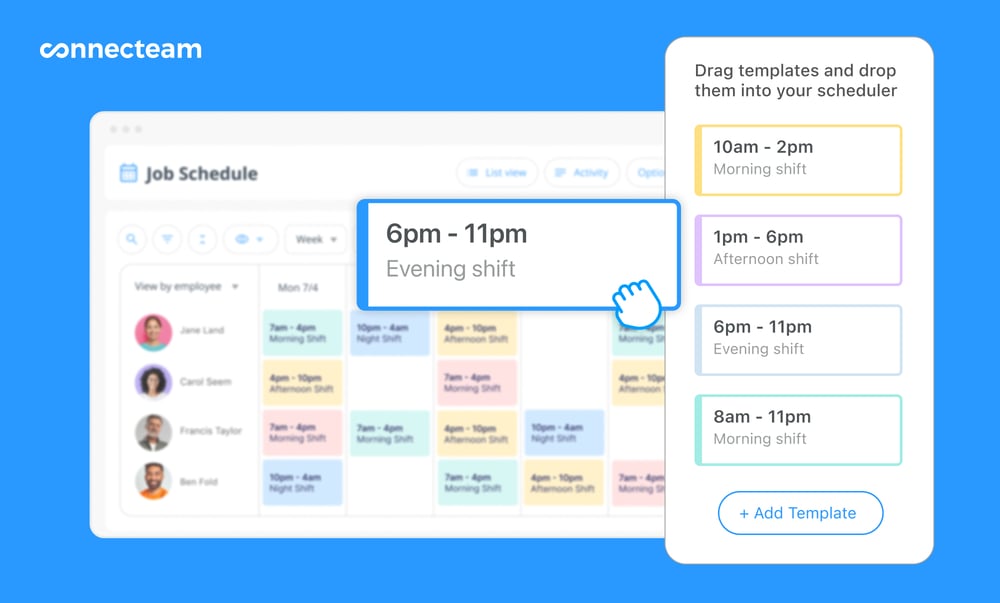Employee scheduling plays a big role in the success of your business. Not only does proper scheduling ensure you’re fully staffed for each shift and keep your labor costs down, but it also has a huge impact on employee satisfaction, which is good for business.
But what is ‘proper scheduling’ anyway? In my eyes, this term means much more than just creating weekly schedules. ‘Proper scheduling’ refers to all activities that come before, during, and after the process.
Scheduling your staff is not a one-and-done task; it’s an ongoing process that must be consistently managed, which is why it’s so difficult (particularly when you have other responsibilities on your plate).
In this article, I’m going over some of the biggest scheduling challenges and how you can counter them in your own business.
What Do I Know About Employee Scheduling, Anyway?
I wasn’t always a writer.
Back in 2017, I was the Assistant General Manager of a one-Michelin-star restaurant called Blackbird in Chicago, which unfortunately was forced to close during the pandemic.
I began that role as a front-door manager, and as soon as I was promoted, the General Manager dumped the schedule on me. “It’s your problem now,” I remember him saying.
While I didn’t think much of it at first, I quickly realized that being responsible for scheduling 25 employees for multiple positions 7 days a week was actually a nightmare.
We didn’t have software or specialized tools for employee scheduling, just Excel and a printer. The schedule would get tacked up on the office bulletin board, and then I’d have to wait.
Wait for someone to point out an error, for two employees to ask to swap shifts, for someone to tell me something wasn’t fair, you name it.
It wasn’t my favorite part of the job, let’s put it that way.
So, if we’re talking employee scheduling challenges, I can assure you I’ve experienced them all. And more than that, the role taught me how to solve these scheduling problems so I could avoid them in the future.
So, let’s go over some of the most common challenges, how you can avoid any angst, and solve issues as they arise.
Scheduling issues for managers
Keeping track of everyone’s availability
When I think about scheduling issues, this is one of the most difficult ones that comes to mind. In addition to remembering everyone’s weekly availability, it was always a nightmare to keep up with time off requests.
I can’t tell you how many times a server or busser would come up to me in the middle of a busy shift to let me know they’re unavailable to work sometime in the near or distant future.
While I should have had an organized system in place, I’m embarrassed to say that I didn’t. My “system” was to jot the request down on a piece of paper, stick it in my pocket, and pray that I remember when it came time to make the schedule.
When the restaurant was really busy, I’d forgo writing it down and just make a mental note — which, of course, is never a good idea. More often than not, I’d forget completely or accidentally remember the wrong dates, wreaking scheduling havoc.
No matter your industry, this can be incredibly problematic. This not only leads to scheduling conflicts that you’ll just have to fix later but can be incredibly frustrating for your staff.
The Solution
- Keep everyone’s availability in one place. You can use Excel or a notebook, but neither of these methods will necessarily prevent scheduling conflicts.
This is when an employee scheduling app like Connecteam becomes useful and takes the headache out of the entire process. Employees can submit their own availability, work preferences, and time off requests directly in the app, and then you can approve or deny them. Then, all you need to do is create the schedule, either with AI scheduling or manual scheduling.
If you use the AI Scheduler, Connecteam takes into consideration employee availability, skillsets, time off, and business needs to create schedules in seconds.
If you create schedules manually and accidentally schedule someone who’s unavailable, the app will flag it so you can adjust the shift immediately.

- Implement a policy that requires employees to request time off in advance. The amount of time may vary depending on your industry, your business, and how often you make the schedule, but I recommend a minimum of two weeks, so you have enough time to adjust the schedule.
- Designate one manager to create the schedule. While it may seem like a good idea to share the load, I can assure you this will just make things more confusing.
Communication breakdowns are already a major problem when creating and distributing schedules, and adding another manager to the responsibility will only complicate the process. - To avoid multiple team members requesting time off at the same time, encourage your staff to check in with each other before requesting time off. I spoke with the VP of Operations at Aegle Nutrition Manufacturing Facility, Dan Gallagher, who says that most employees don’t check with their colleagues when requesting time off. “However, if you can get your team members to check with each other and come to a compromise between themselves, it’s going to make your job easier,” he says.
📚 This Might Interest You:
Check out our article on the most popular employee scheduling software for different business needs, such as companies with multiple locations, enterprise-grade scheduling capabilities, and software specialized for restaurants and hospitality.
Scheduling is time-consuming
I’m throwing this one on the list because I think it’s fair to say creating weekly job or shift schedules is incredibly time-consuming.
When the GM first handed over the responsibility of scheduling, I didn’t realize how much time it would take. I figured putting people’s names into Excel cells would be a piece of cake – but I was wrong.
It could take me hours and several drafts to create a final copy, only to pin it up and have to rework the entire thing once a conflict came to light.
The Solution
Establish a dedicated time every week to create the schedule. Whether it’s first thing Monday morning or Tuesday after lunch, allocate a specific time and day for creating the schedule so you make sure you have enough time to get it done. This will also allow you to plan the rest of your managerial tasks around this time and prevent last-minute scheduling.
Addressing skill mix and coverage needs
This demands a careful balance. Each shift needs an adequate number of employees, and it can be difficult to monitor role and skill distribution while planning the schedule.
In most industries, including F&B, retail, and construction, this means more than just having the right number of employees scheduled; you need to factor in your staff’s varying skill sets.
At Blackbird, several servers were also sommeliers, and at least 1-2 needed to work Wednesday to Saturday evenings.
Same thing with our host team: some were much more efficient at managing the reservation book than others, and we had to mix and match our team to maximize their skill sets and ensure all responsibilities were covered.
The Solution
Use employee scheduling software. Scheduling software has come a long way since my time at Blackbird, and I highly recommend taking advantage of an employee scheduling app no matter what industry you’re in.
Why? Not only can you customize the software to fit your business needs, but it automatically keeps track of which roles and skill sets are required for each shift.
Then, you can either use the AI scheduling feature to create schedules in seconds or take advantage of pre-existing templates – or create schedules manually.
If you opt to use scheduling templates or create schedules from scratch, a solution like Connecteam provides a complete overview of everyone’s capabilities and roles, and the system flags you immediately with any conflicts or errors so you can create perfect work schedules every time.
Last-minute call-outs and no-call-no-shows
It doesn’t matter what industry you’re in: there’s nothing more frustrating than getting that call right before a shift starts that an employee can’t come in. Or even worse, if someone simply doesn’t show up.
There are many reasons for employee absences, but one thing’s for sure: it costs your business money. In fact, the yearly cost of employee absenteeism due to worker illness and injury in the US is $1,685 per employee each year.
What’s important, however, is how you handle this to ensure that the shift still runs as smoothly as possible.
The Solution
- Create an on-call schedule. On-call scheduling is the best tool I’ve found for combating last-minute employee absences. Here’s a quick overview of how to create an effective on-call schedule:
- Determine your coverage needs. Identify which shifts require on-call coverage (you may opt to not create on-call schedules for slower shifts).
- Develop a rotation. Decide on the rotation frequency (weekly, bi-weekly, monthly) based on your needs and staff availability. To ensure fairness, arrange the rotation sequence alphabetically by employee name.
- Set clear rules and expectations. Define on-call responsibilities, including response times. Make sure to clearly communicate the on-call policy to your team, including compensation.
- Allow for flexibility. Provide a mechanism for swaps if staff members cannot fulfill their on-call duty, ensuring that changes are communicated and documented.
💡 Did You Know?
With Connecteam, you can easily add on-call positions to the employee scheduler and even include notes and individualized pay for the on-call staff. If you need an on-call employee to come in for a shift, easily contact them directly through the app to let them know they’re needed.
Employees can also swap on-call shifts directly in the app or release their on-call shifts, creating an open shift in the schedule (with manager approval). Relevant employees will automatically be notified, giving them the opportunity to pick up the on-call slot.
- Prioritize employee engagement. If employees are unhappy at work, don’t feel connected to the company, or feel unvalued, they’re more likely to call out last minute or simply not show up at all.
According to Zippia, employees with the highest levels of engagement are 87% less likely to voluntarily leave their jobs. So, it’s worth investing in employee engagement strategies to retain your team.
When employees are happy and motivated at work, they put in more effort to do a good job–including showing up in the first place.
📚 This Might Interest You:
Check out our article on why employee engagement matters and how to keep employees engaged.
Complying with labor laws
Complying with labor laws can be challenging due to the complexity of regulations across jurisdictions, the need to balance operational demands with legal requirements, and, of course, the ongoing task of accurately tracking employee work hours, breaks, and overtime.
This is made even more difficult if you work with field workers who may be located in different cities or states.
There’s also the fact that laws can change, meaning you have to constantly remain in the know to avoid legal issues and fines.
The Solution
- Stay informed: Regularly updating yourself on national and local labor laws is a crucial scheduling practice. This includes understanding the Fair Labor Standards Act (FLSA), federal labor laws, state-specific wage and hour laws, and regulations pertaining to breaks, overtime, and minors.
Consider subscribing to employment law newsletters, joining regulatory forums, and checking out our guides on labor laws by state. You can also consult an employment lawyer with any questions.
- Implement comprehensive employee scheduling software: Use employee scheduling software that can be customized to comply with overtime laws.
Software like Connecteam can prevent overtime, send automated notifications to staff to take mandatory rest or meal breaks, prevent shift overlaps, and ensure employees only work a certain number of hours per week. You can also maintain accurate timesheets reflecting overtime hours and pay that you can keep for your records. - Educate your team: Create clear policies for overtime, scheduling, and breaks and ensure that all managers and supervisors are trained on labor laws and understand the importance of compliance.
Communicating the schedule
Getting the work schedule out to everyone in a timely and efficient manner can be a nightmare without a reliable system in place.
At Blackbird, we tacked the schedule on a bulletin board in the office.
This was problematic since not everyone worked every day, leaving some staff in the dark for a few days about their upcoming workweek.
We’d often snap a picture and send it to an employee via text if they asked, but honestly, this always felt burdensome to me since it was just an extra step in my day.
Not to mention, how to communicate updates if the schedule changed after sending it out, at Blackbird that employee would not be updated until they were physically at the restaurant.
The Solution
Only 7% of US workers strongly agree that communication is accurate, timely, and open where they work. To counter this, I highly recommend establishing an effective communication system where you convey all work-related information in one place. I’d avoid emails and texts because work messages can easily get lost amongst personal ones.
Opt for an employee communication app that allows you to send out the schedule to everyone with the click of a button. Employees should be able to view the schedule in real-time from their mobile devices, and it should update immediately when you make schedule changes.

Look for a communication app that includes an in-app chat feature for all work-related communication, an employee knowledge base to store documents and training materials, and an employee directory to keep all employee contact information.
Scheduling issues for managers and employees
Messy shift swapping
If your staff is anything like mine was, shift swapping is inevitable; things are going to come up after the schedule is published. Two employees may request to swap shifts, or one may offer to cover the other. They’ll first need to speak with each other and then relay the message to you, which can be a messy process for employees and yourself.
You’re most likely already familiar with these shift-swapping issues:
- Ensuring there are no gaps in skills. Swapped shifts need to align with the necessary skills and qualifications for that specific shift. If you work in a retail store, for example, and a cashier wants to trade shifts with someone who typically works the floor, this can be problematic since the two may lack the skills necessary to do each other’s jobs.
- Miscommunication is common. Without clear policy guidelines and effective communication to ensure the swap request makes it onto the schedule, you may find yourself short-staffed.
- Overtime. Employees may not be aware of how many hours others have worked that week. If someone picks up an extra shift, it may put them into overtime.
- More work on you. Managing shift swaps puts more work on you, which takes time away from other operational responsibilities.
The Solution
Create a clear shift-swapping policy or shift bidding policy that lays out your expectations with clear direction. For example, dictate exactly how employees should request a shift swap and let them know that it isn’t final without manager approval. You can also designate rules for rejecting shifts and picking up open shifts.
I also highly recommend limiting shift swaps and pick-ups to a designated time frame once the schedule is published. For example, if the schedule is published on Monday, staff have until Thursday to swap shifts. Doing so ensures that schedule changes are handled early, preventing last-minute scrambling.
🧠 Did You Know?
With Connecteam, employees can submit shift swap requests directly in the app, and you can approve or deny them right away.
You can set the app to allow only qualified team members to swap shifts with each other, preventing someone without the right skills from working a shift. It also sends immediate notifications to them once you’ve approved the swap.
Unequal shift distribution
I remember hearing my employees’ voices in my head as I created the weekly schedule.
Echos of “How come I’m not scheduled Saturday night this week?” and “Why did so and so get my Friday dinner shift?” would play in my mind as I struggled to make the schedule as fair as possible.
Ensuring even shift distribution was a huge challenge for me, but was sometimes the inevitable result of having a limited number of weekly shifts available.
When employees saw their co-workers getting more shifts or more lucrative ones, such as weekend dinners when tips were the highest, they’d get frustrated and angry.
This is something you definitely want to avoid as much as possible if you want a happy, motivated, and productive group of employees.
The Solution
More likely than not, the number of employees you have doesn’t divide equally into the number of weekly shifts, resulting in some employees having more shifts than others.
To counter any unfairness or employee frustration, it’s important to develop fair criteria for shift allocation and clearly communicate them to your team. At Blackbird, some shift assignments remained consistent, but I’d also rotate both more and less desirable shifts.

Friday and Saturday nights, for example, were the most desirable times to work because customer volume and tips were the highest, and the Monday lunch shift was the one no one wanted.
You can apply the same concept to whatever industry you’re in. For example, if you’re scheduling nurses, you may want to rotate less desirable shifts like night shifts and holidays throughout the year.
I used Excel to keep track of scheduling rotations, although I would highly recommend an employee scheduler to automate the entire process.
While a rotation isn’t a perfect system because you still need to consider everyone’s availability and skill sets, it helps keep shift distribution as equitable as possible.
Staff shortages
You’ve most likely dealt with staff shortages before. In fact, according to ManpowerGroup, 75% of employers are struggling to fill job vacancies in 2024.
There are many reasons why a staff shortage can be problematic, including that it may limit business operations.
However, you can counter this by learning how to create optimal schedules to maximize the staff you do have and keep your business running as smoothly as possible.
From an employee perspective, a staff shortage may force them to work extra hours or double shifts, which can lead to burnout and decreased morale and job satisfaction.
The Solution
Here are some practical tips for creating schedules and maintaining team morale when you’re short-staffed:
Planning and communicating schedules:
- Use labor forecasting: Analyze historical data to predict workload and staff needs for future periods to help you create a more realistic and efficient schedule.
- Communicate with your team: As part of a good organizational communication plan, it’s important to inform your team about the staffing shortage and explain how it might impact schedules.
- Publish schedules early: Give employees ample notice, ideally at least two weeks in advance, so they can plan their personal lives accordingly.
Optimizing schedules:
- Cross-train employees: Train team members on different tasks and roles to increase their flexibility and fill coverage gaps.
- Consider alternative scheduling options: Explore options like split shifts, compressed workweeks, or flex time to accommodate employees’ needs and preferences.
- Utilize employee scheduling software: Invest in an employee scheduling app that can automate tasks, streamline communication, and make schedule changes easier.
Maintaining employee engagement:
- Offer incentives for picking up extra shifts: Consider offering additional pay, bonuses, employee rewards such as gift cards, or other perks to incentivize employees to take on additional hours.
- Be flexible and accommodating: When possible, try to accommodate employee requests for time off or schedule changes, especially if it helps them maintain a healthy work-life balance.
Show appreciation: Acknowledge and thank employees for their extra effort and flexibility during challenging times.
Scheduling errors
We’ve all been there: you’re creating the schedule, post it in the office or text it to your staff, and then realize that you’ve accidentally scheduled someone twice for the same shift, scheduled someone for the dreaded clopening shift (when an employee has the last shift of the day and the first shift the following day), or put someone into overtime when your labor budget doesn’t allow for it.
Scheduling errors like these can cause confusion and frustration for your staff. Not to mention, it means more time spent on the schedule fixing your mistake.
The Solution
Employee scheduling software with auto-scheduling and error flagging is going to be your saving grace here.
Why? With auto-scheduling, all you do is indicate your scheduling needs to the app, and it automatically generates optimal schedules based on employee availability, skill sets, and business needs.

With error flagging, the software will let you know when you’ve accidentally created a scheduling mistake if you’re creating schedules manually. No more trying to piece together who’s available when or double-checking yourself for scheduling mistakes.
📚 Keep Reading:
Read our full guide on employee scheduling to learn more as a manager about creating team schedules that optimize workplace productivity and employee satisfaction.
Read more about different kinds of standard schedules, such as the 2-2-3 schedule (Panama schedule), Dupont schedule and Pitman schedule.
Benefits of Effective Employee Scheduling
We’ve gone over scheduling challenges, but how can proper scheduling actually benefit your business?
Here’s how:
- Increased employee morale and engagement: Proper scheduling ensures that employees are not overworked, promoting a healthier work-life balance. This can lead to higher job satisfaction and employee engagement.
- Reduced absenteeism and turnover: By accommodating staff’s personal needs and shift preferences, scheduling can actually reduce employee dissatisfaction. As a result, you’ll likely have fewer absences.
- Improved customer service: With strategically planned shifts, businesses can ensure that they have the right amount of staff at peak times so they can provide timely and high-quality service.
- Optimized labor costs: Effective scheduling aligns workforce supply with demand, ensuring that businesses are not under or overstaffed so they optimally
- Increased productivity: When you create schedules with employee preference in mind, your staff are more likely to work hard. This boost in morale naturally leads to getting more done.
Experience The Power Of Complete Employee Scheduling Oversight With Connecteam Today!
14-day free trial, no credit card required.
Start Free



